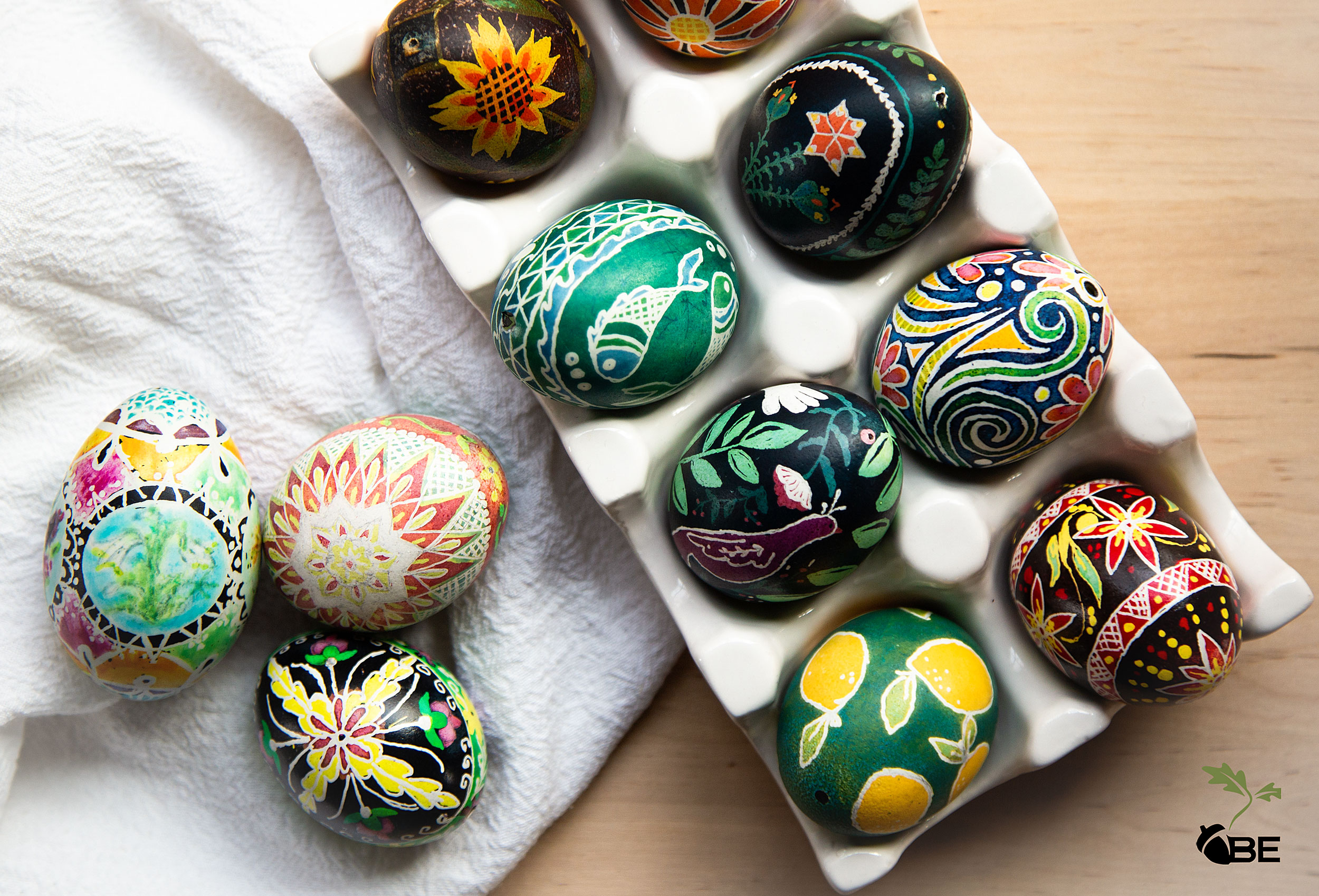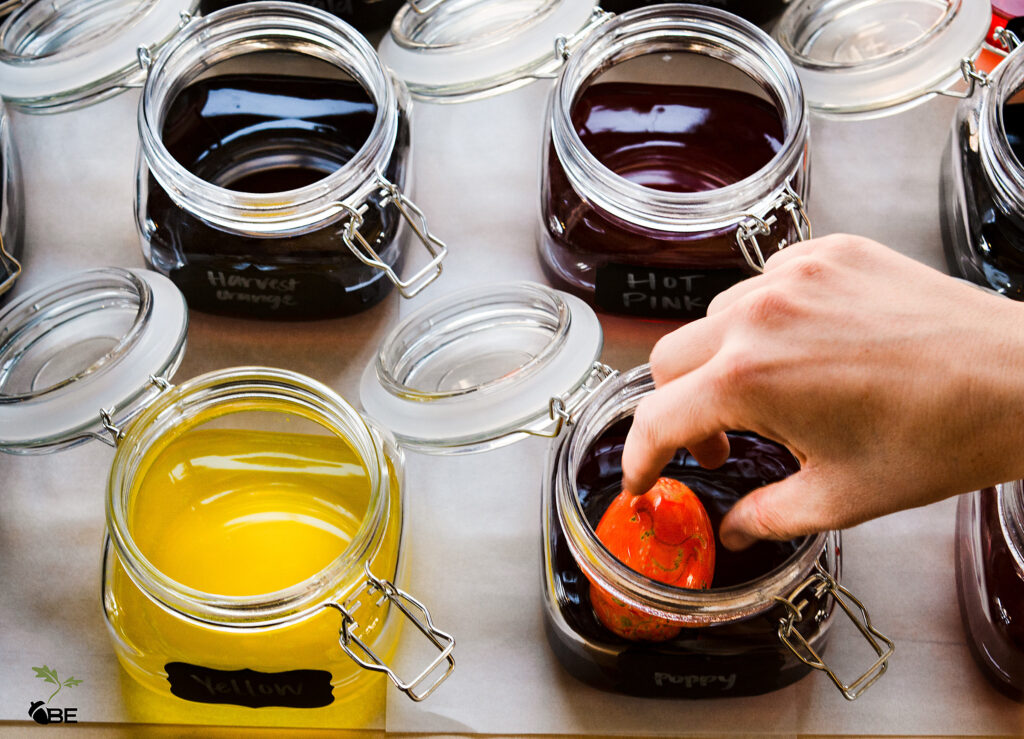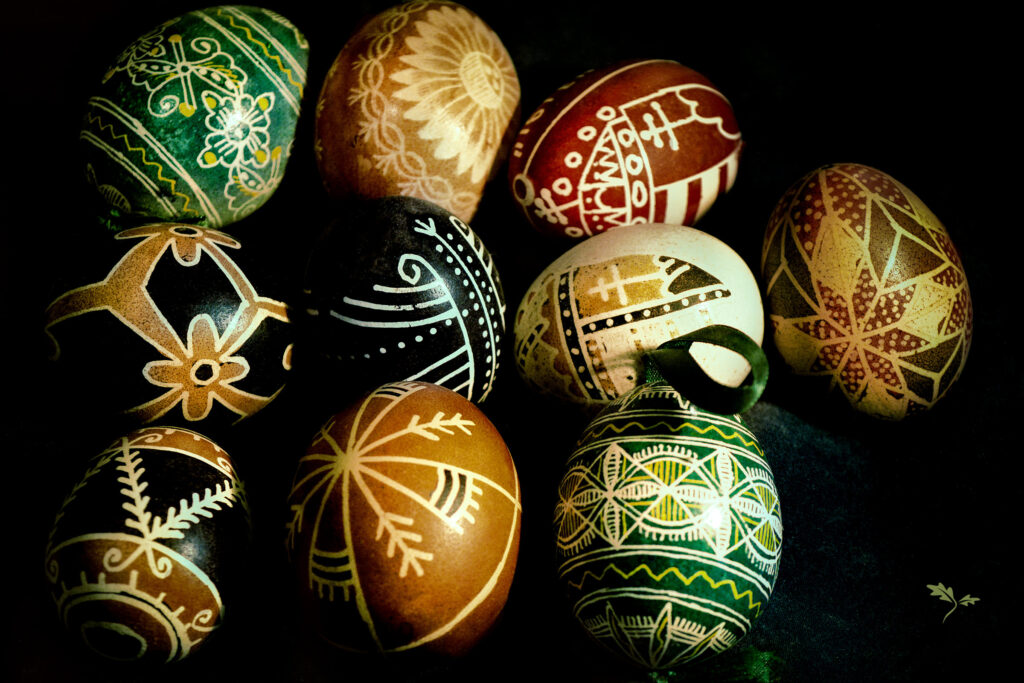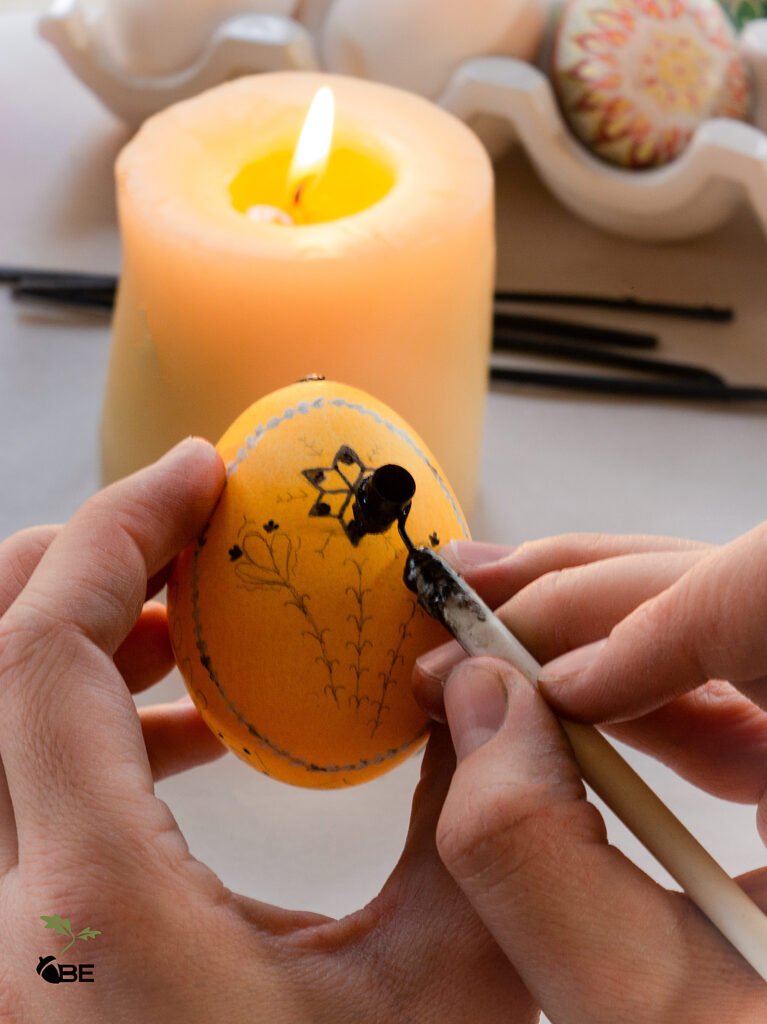As a young girl, I walked toward the elementary school with my next-door friend down a large hill and passed a small bungalow on some overgrown acreage with a pond of swans. During my 6th-grade year, the widow, Mrs. Clegg, who lived in the home, asked my mother if my friend and I could assist in putting away her holiday decorations. A little nervous but overjoyed to finally see the house with the swan lake up close, I agreed to help. I didn’t imagine finding such a refined and well-traveled woman who shared inspiring stories about the world’s cultures and people. The fragile treasures that we wrapped meticulously came from the far reaches of the planet, from places I never knew existed at that time of my life.
One decoration stood out uniquely above the others: Easter eggs at Christmas. I wondered if she had mixed up her holidays. She noticed my curiosity and explained that she cherished her Pysanky eggs, which she received when she and her husband had lived in Ukraine many years ago, even before the Communist government started constructing the Berlin wall in 1961. Becoming part of the community, at the close of Lent, she received the traditional handmade gifts from her neighbors, wishing her prosperity, friendship, and joy. She witnessed the people creating and sharing the Pysanky eggs for holidays, celebrations, weddings and births, and expressions of endearment between family and friends. Even the beloved who had departed received an egg, often solely black and white, to commemorate the love and life they had left as a blessing upon their family. Carefully, she brought the decorated eggs back to the United States and kept them displayed all year in the little turned wooden bowl to remember the blessings and love they represented in her life.
Enthralled for decades by the visual beauty of the Ukrainian eggs combined with the passion they had invoked that winter afternoon helping Mrs. Clegg, I determined to learn to make them. In fact, my husband surprised my two eldest children and me with a class to learn to make the traditional Pysanky eggs. In the class, I learned the process but also some of the history, symbolism, and purpose of Pysanky eggs.

Designing the Pysanka
The process for making Psyanky eggs is simple. Each year, millions of people dye eggs for Easter celebrations by placing hard-boiled eggs in their shells into a food-safe colored dye. Yet, the egg-dyeing process involved with the Psyanky requires wax, batik dye, and an intact, hollowed-out egg.
Indubitably, the first step requires selecting eggs devoid of significant cracks and well-shaped. Our family has tried a myriad of eggs, from tiny Bantam eggs to large duck eggs—and even a turkey egg. The traditional laying hen eggs offer the ideal surface for holding the designs and color. Smooth surfaces, like the sleek shells of duck eggs, tend to remain pastel and less vibrant in tone. White chicken eggs create vivid tones, while the brown, pinkish, green, and blue chicken eggs offer unique shades of the bold batik hues.
Piercing both ends of a raw, sanitized eggshell to create small holes, I blow gently with my mouth from the top of the shell the egg yolk and albumen out of the bottom hole (or use a simple extraction device). After sitting overnight to allow the residual egg to seep out of the shell, the clean, dry, empty eggshell will become a blank canvas for my Pysanky art.
I will often use a pencil to illustrate a sketch of my design placement, making bands around the length, width, and even diagonally across the egg to divide it into workable sections for creating repeating patterns. Many Pysanky masters capably execute exact lines and designs from years of practice; my lines and illustrations improve as a work in progress each year.
Next comes the waxing and dyeing fun. Both natural or black beeswax works well, although I prefer the black beeswax because I can see where I have covered the designs. Like the wax, once the egg touches the dye, the color adheres to the porous surface. Therefore, wax offers the only solution to resisting color, especially for the unpigmented or light areas like white and yellow I wish to retain. I have learned that the expression “mind your beeswax” must come from decorating Pysanky eggs because too much or too little may alter or diminish a design in seconds since a waxed area will forever resist dye, even after the wax comes off of the egg. I have altered my plans many times to incorporate a miss-drawn line or wax glob jetting from the Kistka.
The Kistka stylus enables the artist to create the precise placement of the wax on the Pysanka’s surface. Traditional Pysanky makers wrapped a piece of copper around a needle to form a bowl and funnel end, which they securely lashed with sinew or horsehair to a stick. I started with the traditional tool, but I expanded to using the modern Kistkas with the larger, stronger bowl that holds more wax at the end of the small plastic baton. Some people enjoy the electric Kistkas.

Initially, as with fabric dyes, parts of plants created the renowned vibrant colors used in batik. Each family inherited recipes from their ancestors, and even merchants peddled ingredients and chemicals to enhance the dyes and help them stick to the shells. Nowadays, the desiccated batik dyes revitalized by water and vinegar offer poignant color on most egg surfaces. Being chemical, we prepared sealable jars to hold the dyes and keep them stored in boxes to preserve their tones for a few years.
With the egg designed and the wax, Kistka, and dye prepared, I begin by sealing off both of the small holes (to keep dye liquid out) and then covering the white parts of my design with wax. I find it helpful to know where I plan to place the colors to determine the coverage and order of dyeing the egg. To use the wax, I place a small piece of wax in the large funnel end, hold the metal tip over a candle flame, test the flow on a sheet of parchment, and then draw on the egg. I repeat the process with the wax as it runs low. Over the years, I found that testing the flow became imperative to avoiding globs from wax liquifying and running through the funnel too quickly.

After I cover the white areas with wax, I place the sealed egg in the yellow or other light-colored dye. Once it has reached the desired pigment, I repeat the pattern, covering the portions I wish to stay this chosen coloring. This same process continues until I reach my darker blue, deep purple, red, brown, and, finally, black. Rich tones allow the other colors to leap from the surface, bringing the design’s bright tones to the forefront. Often I paint in small areas like green leaves or blue dots, allow them to dry, and cover them with wax to preserve their colors.
When I have finished my design and used the final dye for the background tones, my Pysanka weighs heavily with multiple wax layers. However, for me, the best part of making the Pysanky eggs is this moment when I can place the waxed egg over the candle flame, careful not to scorch it, and the wax begins to melt off the surface. Little by little, I use a soft cotton or paper towel to remove the melted wax. From its wax-impervious tomb, the most beautiful colors begin to emerge. Ultimately, the wax disappears, and the glory of the Psyanky creation captures everyone’s eyes.
Pysanky’s Purpose
Making Pysanky over the years symbolizes continued growth through trial and error. Every unforgiving wax mark somehow becomes part of the perfectly imperfect design that captures a moment in my life. Each year as the Spring returns, we blow eggs, we wax them, and we dye them. Although the artistic elements of line, color, or composition attract people to the eggs’ flair, the creator’s thoughtfulness and love make these eggs truly beautiful.
I love that my family joyfully gathers together to create these eggs, inviting friends to join in the tradition. Historically, the women in a family would gather the best eggs laid by young hens in the spring and assemble at night after the children went to bed to work on their eggs, producing enough eggs by the close of Lent to gift all the important and cherished people in their lives as well as decorate their home, their farms, and the graves. We gather around the kitchen table, inviting friends and neighbors to join, offering everyone a well-used Kistka, some wax, an illuminated candle, and an empty, blank egg awaiting their creativity. We talk, sing to the background music, and delight in each other’s creativity and designs as they materialize.
As I design my eggs for people I love and respect, creating Pysanky really becomes a process of giving of myself. For over a thousand years, the Slavic nations, where the tradition commenced, knew that this fragile egg art symbolized wholeness, well-being, and newness in life from birth to marriage to death and beyond. They gave eggs with the belief that the love they invested, incorporated into the deliberate motifs and colors used, would magically protect their loved ones in this life or the next. They gave eggs for blessings mixed with gratitude and remembrance, placing them in the cow barn, the hen house, and even under the beehive for the abundance that the animals would give to their caretaking families throughout the year. I can imagine a speckled Wyandotte hen sitting atop a nest of vibrant Pysanky eggs!

Most likely, love paves a foundation for whatever tradition and method that we cherish as it brings families and friends together to rejoice in remembrance, strength, and hope. As I visited Hungary and Slovakia years ago, I acquired a few of these handmade eggs, and I cherished the people who took their time to express love and celebration through this unique art form.
To each family passing on the traditional skills, to each family member carrying on the tradition, to those who willingly shared their traditions with me, thank you for creating this beautiful part of my life each spring.
To the little lady in my youth who introduced me to cultures and inspired me to travel the world, changing my life forever, thank you for cherishing and taking the time to teach a young girl the importance of keeping family traditions of hope and love alive.
Written by Robyn J. Mock
Photography, Videography & Stylized by Jenny Mock

©Be the Beautiful Life All Rights Reserved



